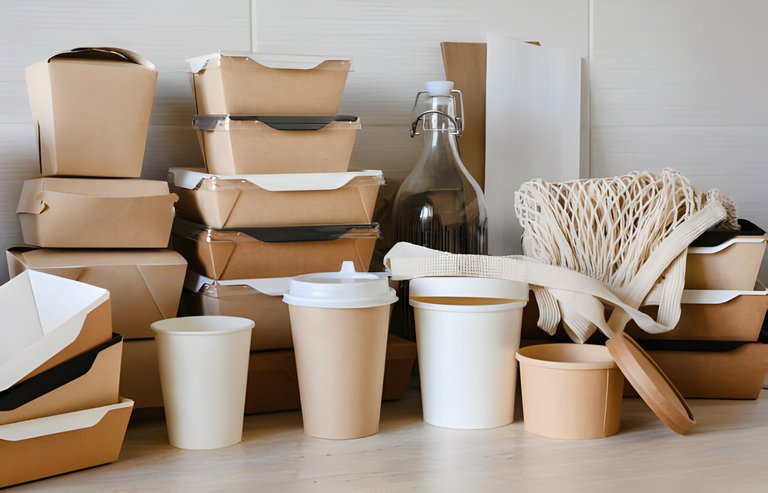
In today's fast-paced world, the demand for convenience has led to the widespread use of food boxes and disposable takeaway coffee cups. While these items serve a practical purpose in facilitating on-the-go consumption, their environmental repercussions cannot be ignored. The excessive reliance on non-biodegradable materials has contributed to pollution and resource depletion on a global scale.
Environmental Impact of Food Boxes and Disposable Takeaway Coffee Cups
The environmental impact of food boxes and disposable coffee cups is staggering. Each year, billions of these items end up in landfills, where they take centuries to decompose, releasing harmful chemicals into the soil and water. According to recent statistics, the food packaging industry is responsible for a significant portion of the waste generated worldwide, exacerbating issues such as climate change and habitat destruction.
Challenges with Traditional Packaging
Traditional food packaging often consists of materials like plastic and polystyrene, which are non-biodegradable and pose a threat to ecosystems. Moreover, the prevalence of single-use culture perpetuates a cycle of waste generation, as these items are discarded after a single use, contributing to the accumulation of plastic pollution in oceans and waterways.
The Rise of Sustainable Packaging Solutions
In response to growing environmental concerns, there has been a shift towards sustainable packaging solutions that prioritize eco-friendly materials and practices. Biodegradable food boxes made from materials such as recycled cardboard and plant-based plastics offer a greener alternative to traditional packaging, reducing reliance on fossil fuels and minimizing carbon emissions.
Eco-Friendly Alternatives for Food Packaging
Biodegradable food boxes are designed to break down naturally over time, reducing the environmental impact of waste disposal. Similarly, compostable disposable coffee cups made from materials like paperboard and PLA (polylactic acid) can be composted along with organic waste, diverting them from landfills and contributing to soil health.
Advantages of Using Eco-Friendly Packaging
The adoption of eco-friendly packaging offers numerous benefits, both for the environment and for businesses. By reducing the reliance on non-renewable resources and minimizing waste generation, sustainable packaging solutions help mitigate the negative impacts of traditional packaging methods on ecosystems and human health.
Innovation in Sustainable Packaging
Advancements in technology have led to the development of innovative packaging solutions that combine sustainability with functionality. From bio-based polymers to edible packaging alternatives, the future of eco-packaging holds promise for creative and effective ways to reduce environmental harm.
Cost Considerations
While the initial cost of transitioning to eco-friendly packaging may be higher than traditional options, the long-term savings and benefits far outweigh the investment. Companies that prioritize sustainability not only reduce their environmental footprint but also enhance their brand image and appeal to eco-conscious consumers.
Government Regulations and Policies
Governments around the world are implementing regulations and policies to encourage businesses to adopt sustainable practices. From bans on single-use plastics to incentives for eco-friendly packaging, legislative efforts play a crucial role in shaping industry standards and promoting environmental stewardship.
Consumer Awareness and Demand
As consumer awareness of environmental issues grows, so does the demand for sustainable products and packaging. Businesses that align with consumer values and prioritize sustainability are better positioned to attract and retain customers, driving market demand for eco-friendly alternatives.
Corporate Responsibility
Corporate responsibility extends beyond profit margins to encompass environmental stewardship and social impact. Companies that demonstrate a commitment to sustainability not only fulfill their ethical obligations but also contribute to long-term business success and resilience in an increasingly eco-conscious market.
Case Studies
Numerous companies have successfully implemented eco-friendly packaging solutions, demonstrating the feasibility and benefits of sustainable practices. From small businesses to multinational corporations, examples abound of companies that have reduced their environmental footprint while enhancing brand reputation and profitability.
Educational Campaigns and Awareness Programs
Educating consumers and businesses about the importance of sustainable packaging is essential for driving widespread adoption. Through educational campaigns and awareness programs, organizations can empower individuals to make informed choices and inspire industry-wide change toward more sustainable practices.
Challenges and Limitations
Despite the progress made in sustainable packaging, challenges remain in achieving widespread adoption and overcoming logistical and operational hurdles. From supply chain complexities to consumer behavior patterns, addressing these challenges requires collaboration and innovation across industries.
Conclusion
In conclusion, the impact of sustainable packaging on food boxes and disposable takeaway coffee cups cannot be overstated. By transitioning to eco-friendly alternatives, businesses can reduce their environmental footprint, enhance brand reputation, and contribute to a healthier planet for future generations. Through collective action and innovation, we can build a more sustainable future where convenience and conservation go hand in hand.